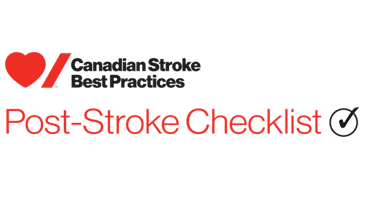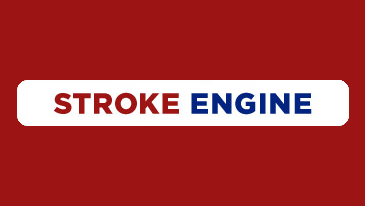- Definition and Considerations
- 1. Supporting People with Stroke, Their Families and Caregivers
- 2. Education for People with Stroke, Their Families and Caregivers
- 3. Interprofessional Care Planning and Communication
- 4. Community Participation Following Stroke
- 5. Transition to Long-Term Care Following a Stroke
- 6. Post Stroke Depression
- 7. Post-Stroke Fatigue
Definition
Transition refers to the movement of people across various healthcare locations, settings, and providers.
Transition management includes working with persons with stroke, their families, and caregivers to establish and implement a transition plan that includes goal setting and has the flexibility to respond to evolving needs. Successful transition management requires transfer of accountability through interdisciplinary collaboration and handover between healthcare providers, persons with stroke, their families, and caregivers. It encompasses the organization, coordination, education, and communication required as people move through the stages and settings for stroke treatment, recovery, reintegration, adaptation, and end-of-life care. Note that a transition plan includes discharge planning.
The goal of transition management is to facilitate and support seamless movement across the continuum of care, and to achieve and maintain optimal treatment, outcomes, adaptation, and quality of life for persons with stroke, their families and caregivers. This incorporates physical, cognitive, emotional, environmental, financial and social factors.
Support for individuals, families and caregivers following stroke generally includes assisting with meeting emotional (e.g., providing comfort, listening to problems), instrumental (e.g., providing training, organizing services, helping with household chores), informational (e.g., providing information about illness and services), and appraisal (e.g., providing feedback about their caregiving activities) needs. In addition, support refers to providing direct care, access to required services, and facilitating linkages to resources to ensure that the needs of the individual, family and caregiver are met throughout the continuum of stroke care.
Support needs change across the illness and recovery trajectory and are most beneficial if it is closely matched to individuals’ current needs. The goal of individual, family and caregiver support is to enable each person to manage their recovery or the recovery of after the person with stroke and optimize participation and fulfillment of life roles.
An Advance Care Plan is defined as written communication by a competent individual imparting their preferences regarding potential future healthcare decisions. These plans are to be referred to in the event of future incapacity of said individual.
An advance care plan can involve two key factors: “Instructional Directives” and “Proxy Directives”. According to the Health Law Institute1:
“Instructional directives state what (or how) health care decisions are to be made when you are unable to make these decisions yourself. This type of directive may set out specific instructions or it may set out general principles to be followed for making your health care decisions. Instructional advance directives are also known as ‘living wills’. Proxy directives specify who you want to make decisions for you when you are no longer able to make the decisions yourself” (Health Law Institute, 2018). This designation is also known as ‘power of attorney’ or ‘substitute decision maker’.
Caregiver refers to a family member or friend who is unpaid and involved in the care of a person who has had a stroke across their illness and recovery trajectory. They assist with many aspects of care including activities and instrumental activities of daily living, attending to health care needs, supporting emotional needs, advocacy, rehabilitation, and community re-integration and resuming life roles. As an integral member of the care team, they need to be recognized and supported in their caregiving role and their capacity to provide the many facets of care.
Case Managers enable people, their families, and caregivers to maintain and achieve their highest level of functioning and independence. Case managers maintain an ongoing assessment process, which involves identifying the changing needs of the person and helps to facilitate optimal outcomes. They oversee, coordinate, and integrate the delivery of care. Case managers possess the knowledge, skill, and judgement to ensure that people receive the highest possible quality of care when they need it.
Community is defined as the physical and social care environment where individuals may live after having a stroke. It includes any non-hospital setting, where one would reside and resume life roles and activities following a stroke such as a family home, assisted living facility, long-term care, or other residential settings.
Community Reintegration involves return to participation in desired and meaningful instrumental activities of daily living, community interests and life roles following a stroke. The term encompasses the return to active community living and contributing to one’s social groups and family life. Community reintegration is a component in the continuum of stroke care; rehabilitation includes identifying meaningful goals for community reintegration and through structured interventions facilitates resumption of these activities to the best of the persons abilities. The person with stroke, their family, friends, caregivers, stroke recovery associations, rehabilitation programs and the community at large are all integral to successful community reintegration.
Community-based care programs are services and programs that are based in the community, in the home of the person receiving services, or in group living situations (Canadian Centre for Accreditation).
Home Care is defined as providing medical, nursing, rehabilitation and personal care services to people in a home setting rather than in a medical facility. Home care services enable people to remain safely in their home by continuing their rehabilitation therapy and increasing their independence.
.
Long-term care is the provision of organized institutional care for three or more unrelated people in the same place. Long-term care is provided for people of all ages who need assistance with the activities of daily living (ADL) in order to enjoy a reasonable quality of life. The need for long-term care following a stroke may be due to changes in physical, psychological and/or cognitive abilities. The goal of long-term care is to ensure that an individual who is not fully capable of self-care can maintain the best possible quality of life, with the greatest possible degree of independence, autonomy, participation, personal fulfilment and human dignity.
The need for long-term care following a stroke is influenced by changing physical, psychological and/or cognitive functional capacities, their abilities and level of independence prior to the stroke, and the availability of family and caregivers. Many people may regain lost functional capacities over a shorter or longer period of time following stroke, while others decline. The type of care needed, and the duration of such care are thus often difficult to predict.
Self-management refers to the ability of individuals to manage their health following a stroke to optimize rehabilitation and prevent recurrent stroke. It includes knowledge, skills, attitudes and behaviours to enhance self-efficacy for managing physical, cognitive and lifestyle changes. It involves active participation of the individual, families and caregivers and may include a plan developed collaboratively with healthcare providers.
Stroke Navigators are individuals who provide holistic case management support and guidance to people with stroke and their families, friends, and caregivers. Navigators provide guidance throughout the stroke recovery experience to help improve the quality of life through education and improved access to, and/or coordination of, healthcare services as well as other needed resources.
Supported Living Environments refers to residential living locations where individuals may transition following stroke, and where they continue to receive healthcare services within a coordinated and organized system. The levels of support and service received are dependent on the individual’s physical and cognitive abilities and ongoing health care needs, as well as available support from family members and caregivers. Supported living environments are settings where individuals can maintain as much control over their lives as possible, while receiving the supports they need to maintain their health and safety.
Supportive living environments may include a range of settings and support service levels, such as: a private home or residence where health care services are provided; group settings such as lodges, transitional care or respite centres where the person with stroke resides with others with similar care and support needs; assisted living settings where the individual has a private room(s) within a residential setting and access to personal care support, group meals, organized social activities, and transportation.
Training refers to collaborative activities aimed at acquiring knowledge and skills necessary for the person with stroke, families and caregivers.





